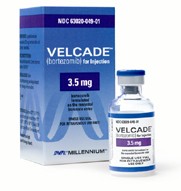
Recently Diagnosed or Relapsed? Stop Looking For a Miracle Cure, and Use Evidence-Based Therapies To Enhance Your Treatment and Prolong Your Remission
Multiple Myeloma an incurable disease, but I have spent the last 25 years in remission using a blend of conventional oncology and evidence-based nutrition, supplementation, and lifestyle therapies from peer-reviewed studies that your oncologist probably hasn't told you about.
Click the orange button to the right to learn more about what you can start doing today.
- You are here:
- Home »
- Blog »
- Multiple Myeloma »
- Stage 1 Multiple Myeloma Treatment- NOT SOC!
Stage 1 Multiple Myeloma Treatment- NOT SOC!

“However, hematopoietic stem cell transplantation (HSCT) survivors are at risk of developing long-term complications, such as endocrinopathies, musculoskeletal disorders, cardiopulmonary compromise and subsequent malignancies…”
Hi David- We spoke this summer when I first joined PeopleBeatingCancer. I am now in week 20 of my treatment. Just to refresh, I am a 52 yo African American male who was smoldering multiple myeloma since 2016- progressed to stage 1 Multiple Myeloma last summer.
My regimen is conservative but effective. I am on Velcade once a week and Dexamethazone, They lowered the dosage on the Velcade because my white cell counts (leukopenia)were getting so low.
I get Xgeva once a month to deal with some osteoporosis, and Xarzio for my low white cells.
I feel very good and I do not have any pain. As of last week my M-Spike was down to .07 from 3.2 when I started treatment. After this next 8 week cycle is up my oncologist is considering adding Revlamid if i am not in remission.
The more I learn, the more I DO NOT want a stem cell transplant. I am not yet convinced that stage 1 multiple myeloma could not be managed equally well through other means, with a LONG overall survival.
I have returned to running and I am up to 50 minutes at a time (just under 5 miles) Even though my Red Cells and Hemogloben are back in the normal range it is taking a long time for my aerobic fitness to come back, so I am running VERY slowly right now.
I am hearing conflicting reports about Green Tea, Resveratrol, and Vitamin C being counteractive to Velcade. I would be curious to know what your thoughts are.
I was hoping that I might also be able to speak with you again in the near future. I do have a pretty extensive list of intergrative therapies that I have been on for several years (Vitamin D, B complex, B 6, Multi, Resveratrol, Curcumin, Ubitquitol, etc.
I have not been dosing on Vitamin C for the past 3 weeks because I have concerns about the Velcade effectiveness. I was taking about 20 grams a day in powdered form. I will look forward to your response.
Hi Walter-
Yes, I remember you well. Congrats on your very good partial remission.
As fate would have it, I came across two studies last October ago that made me think of stage 1 multiple myeloma. The key aspects of your situation that separate your case from the average “standard-of-care” newly diagnosed MM patient are:
- your age- you are 52 while the average MM patient is 69
- your early stage at diagnosis- you were SMM for two years before progressing to early stage MM
- your physical condition- you’re in good physical condition
- IgG Kappa- low risk- no genetic abnormalities-
- No or minimal CRAB (slight bone involvement)
BTW- according to your diagnostic testing your kidney function is fine. You don’t need to spend money on XGEVA- much more expensive than any of the class of bone therapy called bisphosphates. Your call of course.
In short Vincent, you are the prototypical example of the 95 of of MM patients who reach what the study linked below calls a “functional cure.” Before you get excited let me explain what that study is saying.
Two important points are outlined in the first study below. First, the “long PFS” group, those who achieved long OS, were young, early stage, low risk, better shape all around. In my analysis, this is you.
The second, more important consideration, is that this group, the best case possible, live with MM for 15-20 years. While that kind of OS is great for most MM patients, the second study linked below, explains, graphically, that MM patients who undergo autologous stem call transplant aka high dose, aggressive chemotherapy, will eventually develop long-term and late stage side effects such as
- endocrinopathies,
- musculoskeletal
- disorders,
- cardiopulmonary compromise and
- subsequent malignancies…
This is just my opinion, but I think you can live a longer OS with low dose therapies. And certainly live with few side effects because of less toxicity…
To Learn More about Newly Diagnosed Multiple Myeloma Stage 1- click now
Let me know if you have any questions.
David Emerson
- MM Survivor
- MM Cancer Coach
- Director PeopleBeatingCancer
Recommended Reading:
- Stem Cell Transplant for Newly Diagnosed Multiple Myeloma- What are Risks?
- Autologous Stem Cell Transplantation for Multiple Myeloma- Overall Survival vs. PFS
- Arrhythmias (Afib) Caused by Stem Cell Transplants
Functional Cure, Defined As PFS of More Than 7 Years, Is Achieved in 9% of Myeloma Patients in the Era of Conventional Chemotherapy and of First-Generation Novel Anti-Myeloma Agents; A Single-Center Experience over 20-Year Period
“Advances in the management of multiple myeloma (MM) led to a significant prolongation of overall survival (OS), mainly of the younger patients; almost 10% of them experience more than 10-year OS…
All patients had symptomatic disease, based on the IMWG criteria of that period (at least one CRAB symptom to start anti-myeloma therapy)…
Thirty-six (8.8%; 23M/13F) patients achieved a PFS of at least 7 years (long PFS group) after frontline treatment. The median PFS of these 36 patients is 10 years, while the other patients had a median PFS of 22 months.
Long PFS patients were younger (median age 56 vs 68 years; p<0.001), had bigger body surface area (median: 1.85 m2 vs. 1.76 m2; p=0.013) and lower ECOG performance status (score 0-1: 71% vs 52%; p=0.014) compared to all others.
- Long PFS patients had higher hemoglobin (11.4 g/dl vs 10.2 g/dl; p=0.001),
- higher platelet count (278 vs 224 x109/l; p<0.001) and
- higher creatinine clearance (CrCl, based on the MDRD formula: 88 vs 67 ml/min; p<0.001;
- no patient in the long PFS group presented with CrCl <45 ml/min at diagnosis).
- There was no difference between the two groups regarding percentage of patients with high LDH, presence of osteolysis, type of myeloma (IgG vs IgA vs others), levels of serum and/or urine M-protein, and percentage of plasma cell infiltration in the bone marrow.
However, more patients in the long PFS group had ISS-1 or ISS-2 disease (86% vs 61%; p=0.002) and normal pattern of marrow infiltration in the MRI of the spine and pelvis (24% vs 15%; p=0.035).
Regarding chromosome abnormalities at diagnosis, no patient in the long PFS group had high-risk cytogenetics (defined as presence of del17p, t(4;14) or t(14;16) vs 32% in all other patients.
Long-term health impacts of hematopoietic stem cell transplantation inform recommendations for follow-up
“However, hematopoietic stem cell transplantation (HSCT) survivors are at risk of developing long-term complications, such as endocrinopathies, musculoskeletal disorders, cardiopulmonary compromise and subsequent malignancies…


